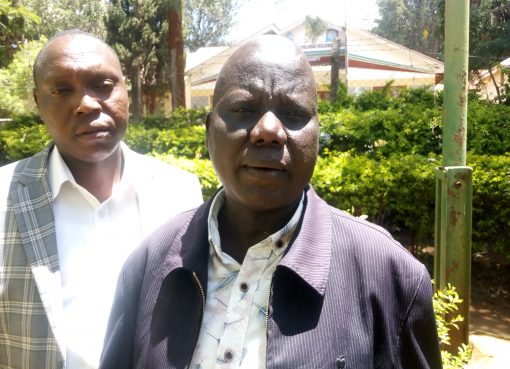Tucked above the main lobby of the iconic Voi SGR station in Taita-Taveta County is an artfully designed shop. The large glass windows allow natural light to flood in from outside. In one corner, a glass-topped table holds a trove of glittering beauties; rows of sparkling silver rings, pendants, bracelets and necklaces artistically embellished with expertly cut precious stones.
Several lumps of misshapen uncut rock are placed carefully on shelves. A dozen traditional sisal baskets, leather belts, wooden sculptures, and beadwork are hoisted up on a stand in one corner. The delicate blend of modernity and tradition coupled with the subtlety in the packaging of the stunning jewelry speaks of dedicated labor of love, care, and passion.
“We are creating something beautiful from gemstones. We plan to make this project glow and grow,” says Ms. Irene Walowe, a gemstone marketer at Taita Gems Shop at Voi SGR station.
Ms. Walowe is one of the thousands of youths in Taita-Taveta County who have found their true calling in opportunities within the gemstones value chain as a result of reforms in the mining sector.
She adds that the value addition component was a vastly unexplored area as most miners sold unprocessed stones to buyers and brokers at a throw-away price. With value addition now a key component of gemstone processing, artisanal miners’ earnings have significantly increased.
At the shop inside the SGR station, the shop is intended to serve hundreds of commuters using the station daily amongst domestic and international tourists.
“This is the strategic facility that offers an untapped market. It is a key tourist’ hub for those coming to Tsavo. This is where we start sending our treasures to the world,” she explains.
The shop’s mainstay is ready-made jewelry adorned with semi-precious stones like tourmaline, aquamarine, and red garnets. Buyers with specialized jewelry needs decorated with rare and precious stones like sapphires, rubies, and Tsavorite are required to place an order for customized products.
“We cater for all clients. We have ready-to-buy products for all walk-ins. For clients in need of top-grade jewelry garnished with precious stones, that is done on order” she adds.
Her fascination with gemstones has grown so exponentially that she intends to enroll in a lapidary course at Taita-Taveta University to become a professional gemstone cutter. She discloses that the scarcity of gem cutters has driven her to hone her skills and introduce decorative cuts in the local gemstone trade.
Such zeal is sweeping through the region with a notable surge in numbers of youths flocking to the mining sector to work in various stages of the mineral processing chain.
Mr. David Zowe, the Chairperson of Taita-Taveta Artisanal Miners, attributes this increase to the state’s move to decriminalize artisanal mining. This has opened doors for most unemployed youths to join the sector. He also adds that the absence of bureaucratic encumbrances like complex licensing processes has made the sector attractive to youths.
“Decriminalizing artisanal mining was a game-changer. It opened up the sector to a lot of unemployed youths. The sector is made more appealing because becoming an artisanal miner requires very little formality,” he says.
Taita-Taveta County has over three thousand artisanal miners. Over half of them are youth. While the majority are laboring in the mines where they get a percentage of the value of the minerals they find, others are venturing into cutting and dealing; areas that require specialized skills. There are expectations that the sector will further absorb even more youths after the government delineates mining zones for artisanal miners.
Mr. Javan Mghendi, the CEO of Javan International Gem Export and Jewelry Shop, says the sector’s growth is on an upward trajectory. He has employed six youths whom he trains on identification, selling, and faceting. Such an apprenticeship program aims at capacity building the young mineral dealers into becoming professionals.
“We don’t only sell gemstones and value-added products. We also teach our young people on faceting and grading the stones,” says the dealer.
The State Department for Mining says the aggressive reforms currently being undertaken in the sector are intended to open up the sector for thousands. The lifting of the moratorium on mining, the re-issuing of mining licenses, the formation of artisanal miners’ marketing cooperatives, and the decentralization of mineral laboratories to the county level are some of the steps taken to create employment opportunities in this sector.
The Mining Principal Secretary (PS) Elijah Mwangi says the reforms will inject growth momentum in the sector, attract investors, and put money in miners’ pockets.
“The essence of what we are doing is to ensure youths and communities in mining areas are the primary beneficiaries of the mineral resource,” he said.
The envisaged reforms are poised to also unlock growth opportunities for thousands of miners of gold, gypsum, granite, and copper in counties of Migori, Busia, Kakamega, Kajiado, Kitui, and Garissa amongst others. Currently, the government says it is looking for an investor to establish a gold smelting plant in Migori to increase the gold profitability for artisanal miners.
Despite such progress, miners have asked the state to strictly enforce the mining laws to eradicate the proliferation of unlicensed dealers and sellers. They propose all precious stones be processed through the state’s regulated Voi Gemstone Center to protect Kenyan brands, markets, and profits.
By Wagema Mwangi





